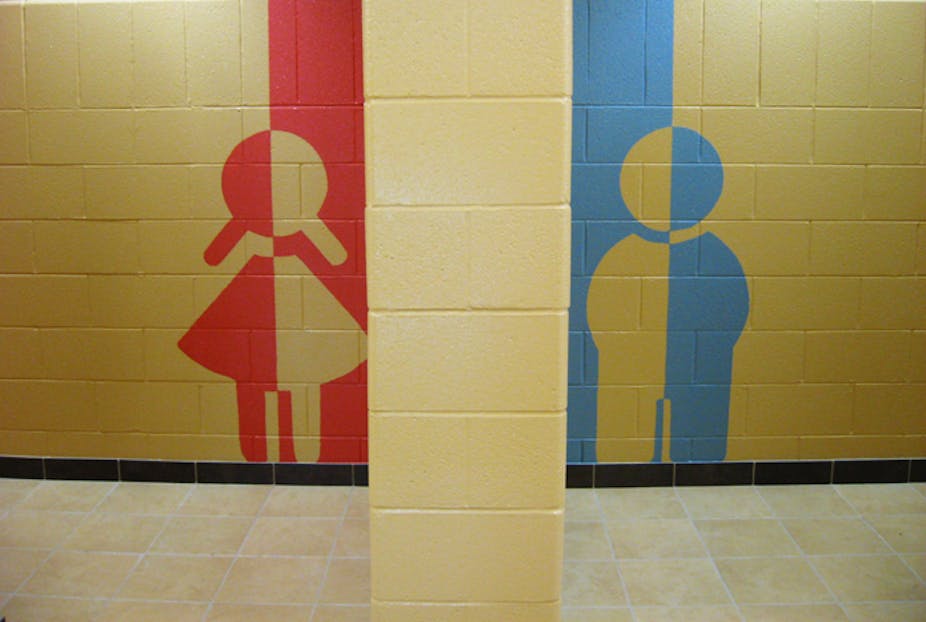Gender-based violence is a deeply embedded problem in many societies and cultures. Despite this, efforts to challenge it are rarely seen at a primary school level. There is a perception that children aged 11 and 12 are too young to “know” about violence, or to offer opinions on it. But this is something that has to change if we are ever going to combat the attitudes and behaviour that can lead to this type of violence.
Recently, I have been conducting research in this area with children in five primary schools across Glasgow. I wanted to look into how young children viewed and defined violence, and thereby confront what I discovered was an everyday acceptance of, in particular, male violence against women.
I found that young people understood and made sense of violence in a way that was always framed by gender. They tended to naturalise violence as an integral part of male identity. They justified male violence using expectations of inequality in gender roles. Violence that occurred amongst peers and siblings was normalised, and therefore not labelled as violence.
My research indicated that actions were only defined as “violent” under some fairly stringent conditions. They understood a “violent” situation to involve an adult male fight taking place outside the home, which would be followed by injury and official sanctions. This kind of violence is replicated by the media in films and in newspapers. When hypothetical examples followed this linear route the children were more likely to judge them as violent.
Incidents that were experienced by the young people themselves were therefore less likely to be labelled as violence. This was compounded by the way in which the girls often found that their own experiences of violent peers, particularly when boys, were invalidated by the lack of adult recognition.
Authority figures such as teachers are more likely to turn a blind eye to boys being violent towards girls. When the girls told teachers that a boy had hit or pushed them teachers normalised the behaviour by saying that it was the boys way of trying to get attention, or “that’s just what boys do.” If the violent actions of men towards women are normalised, girls may grow up to minimise abuse as part of their everyday gendered interactions with men rather than be encouraged to challenge it as behaviour that is wrong.
Stereotypical gender roles are evidently pertinent in young people’s understandings of men’s violence against women.
This is seen in the way that young people access a discourse of difference when talking about men and women. Most children judged adult gender difference as symbolised by heterosexual relationships where they expected men and women to have different roles. They also used age as a signifier in their constructions of gender, judging that the more adult somebody was, the more fixed and restricted their gender identity became.
This can be best illustrated with girls’ future ambition. Girls in particular see their futures as limited, and their ambitions restricted because of their understanding of anticipated gender roles. Whilst viewing their identities as evolving and fluid at a younger age, girls saw these identities as more rigid, and less plural, as they got older. For example, currently the girls had a wide range of ambitions, doctor, astronaut, scientist, dancer. However they saw these ambitions and opportunities as being curtailed by marriage and children. Boys’ ambitions, and their belief in achieving them, did not change.
This gendered invalidation of their own experiences of violence and their understanding of identity demonstrate that the promotion of gender equality and the reduction of gender divisions is a necessity for dealing with this social problem.
Violence against women is rooted in the structural inequalities between men and women. It is both a cause and consequence of gender inequality. When gender divisions and stereotypes are perpetuated, young people are less likely to challenge men’s violence against women.
As adults we need to examine our role in this. We can teach them that all violence is wrong but we also need to scrutinise how we may be limiting what children can be or become. Boys and girls are continuously told that they are “different” from each other, or this is implied by lining them up in different lines at school, having gender specific sports, toys or activities, by speaking to them in different ways or by expecting different things from them.
The promotion of gender equality would mean violence against women was no longer normalised or endorsed by gendered stereotypes. As such, gender segregation and division needs to stop, and all members of society need to challenge all forms of violence against women. Until they do so, women will never achieve an equal status.

